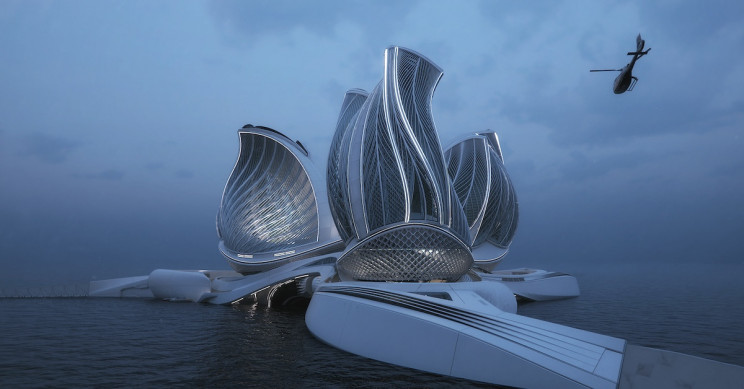Taking serious cognisance of oceanic pollution, two architecture students have propounded a new idea of an eighth continent. The main aim behind their project is to design a continent much like a floating island which can restore the ocean’s health.
As the race to become advanced and developed among the nations gets intensified, nature seems to bear the brunt of various consequences because of rapid development. That’s why the health of oceans has become an increasingly serious concern for many environmentalists and researchers across the world. In the modern-day world, the usage of plastic and its products has become so mainstream, that we hardly realise its hazardous threats to our oceans.
Taking serious cognisance of oceanic pollution, two architecture students have propounded a new idea of an eighth continent. The main aim behind their project is to design a continent that will be like a floating island which can restore oceanic health and will recycle most of the waste in the sea.
After thoroughly studying oceanic pollution Zaha Hadid and Lenka Petrakov, students based in London developed the design for a continent. It will perform the function of preserving the oceans while it will also save aquatic life along with improving the environment around itself. Petrakov has also won the 2020 Grand Prix award for architecture and innovation for her floating continent design.
The floating continent
The architects have affirmed that their project will be a floating station of sorts, which will be quite similar to living organisms while being fully self-sustainable. Moreover, the station will easily remove the plastic from the ocean while it will also enable the recycling of such waste materials in the sea. Besides that, the station will also produce its own energy along with being equipped with greenhouse and desalination centers.
In the long run, this station will solve the problem of garbage in the oceans as it will collect the unwanted dangerous debris from the sea. Thereafter they will be broken down and will be recycled further eventually providing a sustainable future.
Oceanic pollution: Threat to marine & human lives
The problem of oceanic pollution due to plastic materials is a grave threat to both marine lives as well as human beings. According to IUCN, eight million tonnes of plastic ends up in the sea every year. So far oceanic pollution has also led to the extinction of various species in the sea. Apart from that a large part of it also ends up in our food and bodies.
Besides, another report claims that every year almost 100,000 marine mammals and turtles along with 1 million seabirds get killed due to oceanic pollution. So far top oceanic polluters that generate the maximum amount of plastic waste in the oceans are Coca-Cola, Nestle, Pepsi Co, Unilever, Procter and Gamble, and Colgate-Palmolive.
In addition to it, plastic bags, sachets, and plastic bottles continue to be the most found plastic products in the oceans across the world. With that, over 80 percent of plastic does come from the land into the sea. The microplastics developed in the sea enter into the bodies of several marine animals causing harm to aquatic ecosystems. Also, when humans consume sea-food, the pathogens and other toxic substances associated with these life-threatening plastic particles end up in the food chain.
How will the floating continent work?
To tackle these sort of serious threats to marine life, this floating continent-cum-station is specifically designed according to the pacific ocean along with having five parts. These include the barrier, the collector, a research and education centre, along with having greenhouses and a living centre.
The barrier collects waste material from the ocean and further harvest tidal energy which powers the turbine of the station. The collector stores the sorted waste which is biodegradable ultimately cleaning the water.
The greenhouses optimise the collection of condensed water along with facilitating large sails for the wind to easily navigate through the structure. Moreover, the solar panels also ensure sufficient energy by collecting greenhouse gases to provide power for water reservoirs and for heating which allows evaporation and desalination of the seawater.
The filtered clean water is then pumped into a water tank which is further used for plant’s cultivation. The living quarters consist of all the public spaces and galleries while connecting various parts of the station geometrically.

